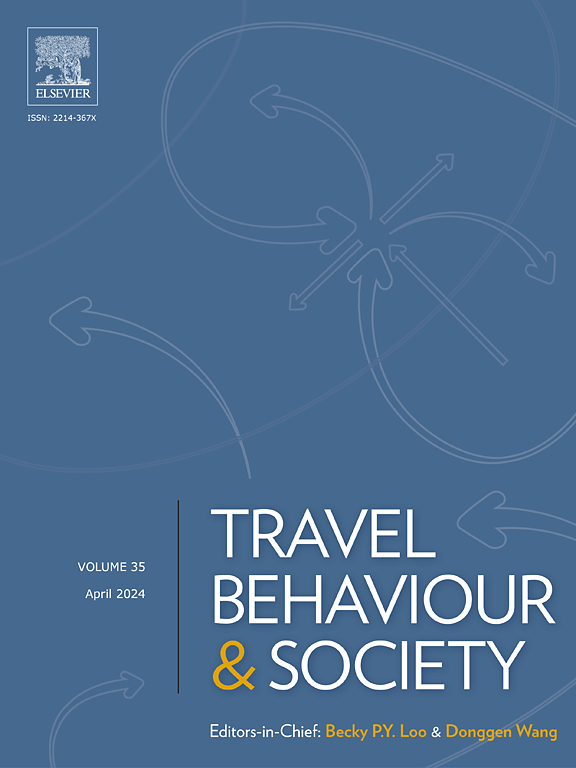Inclusive intervention design for vulnerable road users: Applying co-design and behaviour change model in Bangladesh
IF 5.1
2区 工程技术
Q1 TRANSPORTATION
引用次数: 0
Abstract
In developing countries, it is debatable whether poor design of facilities or violation of traffic rules by road users is the leading cause of pedestrian injuries and deaths. Professionals, pedestrians and drivers tend to blame each other. Shared responsibility for road safety is crucial for protecting vulnerable road users such as commuting students and workers who face higher injury risks while crossing highways. While the Safe System approach emphasises authorities’ responsibility for safe facilities, understanding user needs and promoting behaviour change remain underexplored. This study investigates the current design practices in Bangladesh. It compares the impact of conventional design with co-design on intervention quality and examines the further benefits of integrating a behaviour change model ‘COM-B’.
Local road agency professionals applied the design process and suggested interventions at four highway sites. Subsequently, four focus group sessions were conducted with students and workers, followed by four design workshops. In each workshop, participants were randomly assigned to two design groups (without and with the application of the behaviour change model), where they designed interventions facilitated by professionals. Lastly, perception ratings of stakeholders and safety assessments by four experts were conducted to evaluate the efficacy of all interventions.
The findings highlight major usability problems in conventional designs, while co-designed interventions demonstrate clear improvements. Notably, integrating a behaviour change model further enhances effectiveness. Stakeholder interviews reveal that co-design fosters shared responsibility and addresses the blame culture. The co-design approach and application of the behaviour change model can address design flaws and promote the proper use of facilities.
针对弱势道路使用者的包容性干预设计:在孟加拉国应用共同设计和行为改变模式
在发展中国家,究竟是设施设计不当还是道路使用者违反交通规则是造成行人伤亡的主要原因,尚有争议。专业人士、行人和司机往往相互指责。共同承担道路安全责任对于保护弱势道路使用者至关重要,如上下学的学生和工人,他们在穿越高速公路时面临着更高的受伤风险。虽然 "安全系统 "方法强调了当局对安全设施的责任,但对了解用户需求和促进行为改变的研究仍然不足。本研究调查了孟加拉国目前的设计实践。它比较了传统设计和共同设计对干预质量的影响,并研究了整合行为改变模型 "COM-B "的进一步益处。随后,与学生和工人进行了四次焦点小组会议,接着又举办了四次设计研讨会。在每个研讨会上,参与者被随机分配到两个设计小组(未应用行为改变模型和应用行为改变模型),在专业人员的协助下设计干预措施。最后,由四位专家对利益相关者进行感知评级和安全评估,以评价所有干预措施的效果。研究结果突出了传统设计中存在的主要可用性问题,而共同设计的干预措施则有明显改善。值得注意的是,结合行为改变模式可进一步提高有效性。对利益相关者的访谈显示,共同设计促进了责任分担,并解决了指责文化的问题。共同设计方法和行为改变模式的应用可以解决设计缺陷,促进设施的正确使用。
本文章由计算机程序翻译,如有差异,请以英文原文为准。
求助全文
约1分钟内获得全文
求助全文
来源期刊

Travel Behaviour and Society
TRANSPORTATION-
CiteScore
9.80
自引率
7.70%
发文量
109
期刊介绍:
Travel Behaviour and Society is an interdisciplinary journal publishing high-quality original papers which report leading edge research in theories, methodologies and applications concerning transportation issues and challenges which involve the social and spatial dimensions. In particular, it provides a discussion forum for major research in travel behaviour, transportation infrastructure, transportation and environmental issues, mobility and social sustainability, transportation geographic information systems (TGIS), transportation and quality of life, transportation data collection and analysis, etc.
 求助内容:
求助内容: 应助结果提醒方式:
应助结果提醒方式:


